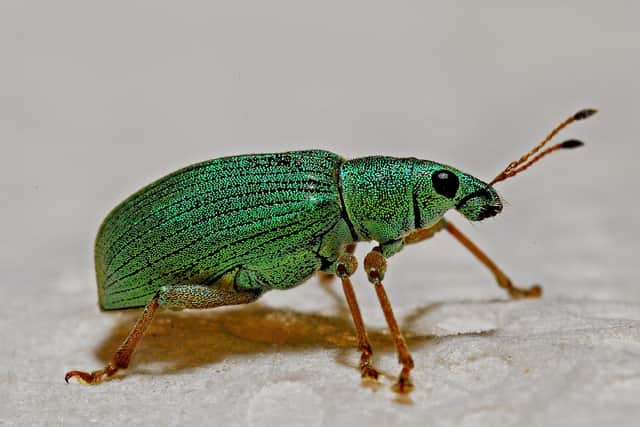How engineers are learning from the powerful circuits of an insect's brain - Prof Barbara Webb
Yet scientists have discovered a small collection of brain cells in the tiny brain of an insect, which forms a circuit for efficient calculation of all the trigonometric functions necessary for navigation.
This insect brain area, called the central complex, has a striking anatomical layout. It has a multilayer structure with eight columns, which map to eight spatial directions, like the eight points of a compass. The relative activation of cells across the eight columns forms a sine wave – strongest in one direction, weakest in the opposite direction and varying smoothly between this peak and trough.
Advertisement
Hide AdAdvertisement
Hide AdIn one layer, the peak corresponds to the direction of travel for the insect. In another layer, the peak corresponds to the direction of their goal, such as a patch of food or a safe nest. The height difference between the peak and trough corresponds to the distance to the goal. Connections between layers allow these sine wave activities to be shifted, added and subtracted, to calculate how to reach the goal.
Insects use this internal calculator for a variety of tasks. For example, it allows fruit flies to maintain an upwind heading towards the origin of an odour plume. Dung beetles can roll a ball in a straight line, away from competitors at the dung pile, by maintaining a specific direction relative to the sun. Monarch butterflies and bogong moths can migrate for thousands of miles on the same compass bearing. Honeybees can take a beeline back to their hives after long foraging journeys, storing the direction and distance that will take them back to the food, and can even communicate this information to fellow bees through a waggle dance.
Taking inspiration from these insects and bugs, engineers are now exploring how we can benefit from this brain circuit by copying it to address technical problems, such as robot navigation.
For example, GPS is not sufficiently accurate for a robot tractor trying to plough in a straight line across an uneven field, but the beetle’s sun compass could provide the required guidance. Replicating the homing abilities of bees could provide a backup system for satnav, particularly in natural environments.
Another property of the circuit structure is that competing goals can be balanced or selected between, flexibly responding to the context. This could find application in self-driving cars, providing a rapid decision in situations where there is not time for lengthy reasoning.


Insect brains use a fraction of the energy of existing computing systems. Intriguingly, the central complex circuit is involved in regulating sleep in insects, suggesting that efficient energy management may be an intrinsic part of its function. Thus learning from nature also has promise to help address the energy crisis we are all currently facing.
Professor Barbara Webb FRSE is Professor of Biorobotics in the School of Informatics at the University of Edinburgh, and a Fellow of the Royal Society of Edinburgh. This article expresses her own views. The RSE is Scotland's national academy, bringing great minds together to contribute to the social, cultural and economic well-being of Scotland. Find out more at rse.org.uk and @RoyalSocE